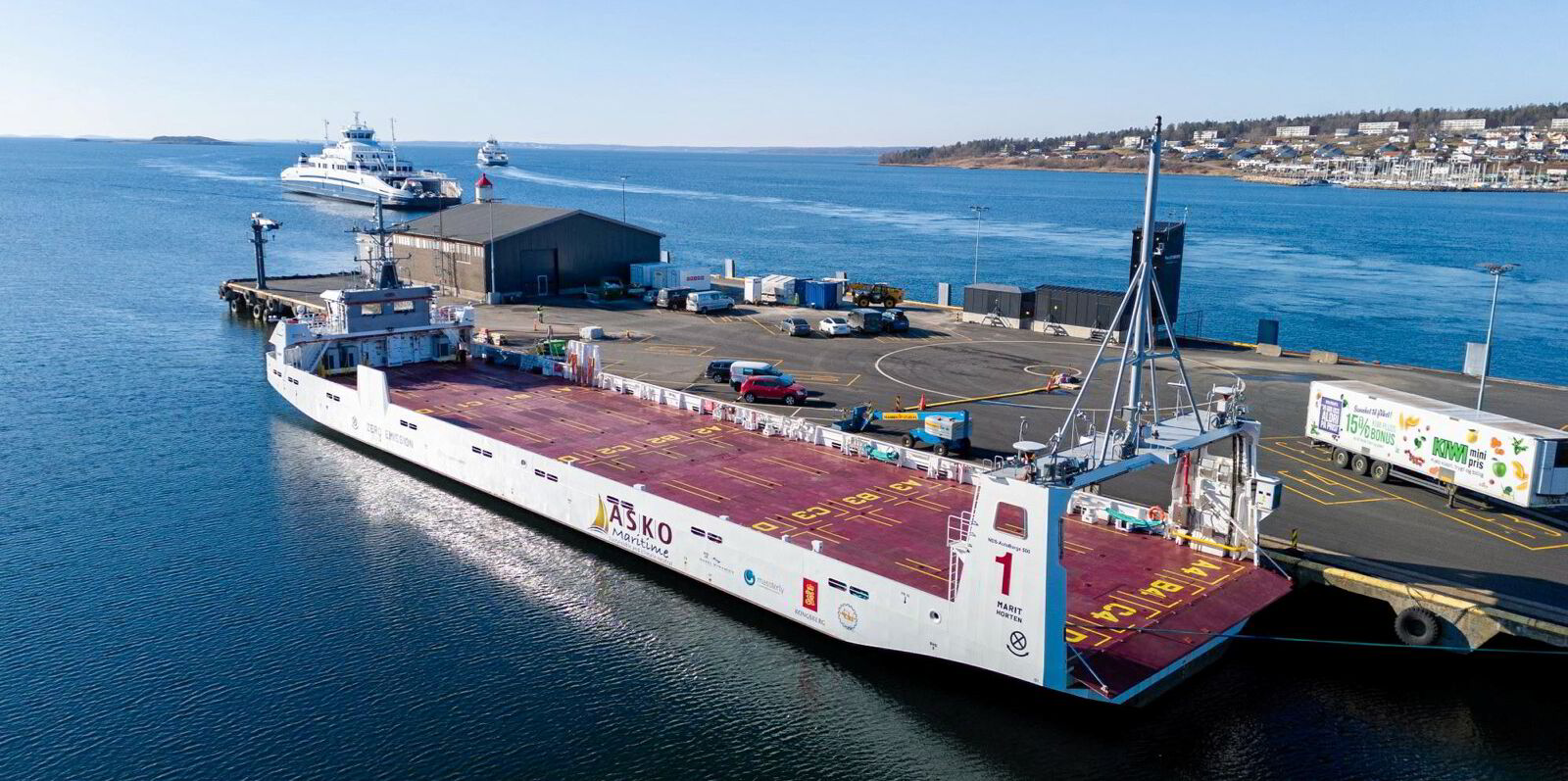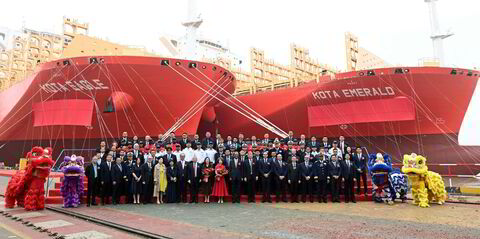Many bulker companies with one foot in shipowning and another in operating vessels have found themselves under pressure this year.
Rather than having an extra leg to stand on, many have been wrong-footed by movements in bulker markets and unexpected global events.
And then there is Belships, which equities analysts continued to describe as “solid” and “steady” after it reported its second-quarter results on Thursday.
“I think it turned out to be another good quarter for us,” chief executive Lars Christian Skarsgard told TradeWinds.
“It’s also a good sign that not too many people are surprised — that perhaps shows that we’ve been transparent with having some contract coverage, so there’s not a lot of moving parts with Belships at the moment.
“In a world with a bunch of uncertainties, I think that’s a good sign — that people are happy with the results. We’re certainly happy with them.”
The ultramax owner paid out another dividend of NOK 0.55 for the second quarter, closing in on three years of consistent quarterly payments.
Resilient amid potential global slowdown
Analysts at Fearnley Securities called Belships “fit to weather tougher markets in the event of a global slowdown”, gesturing at what it called “hesitant” sentiment for dry bulk equities.
Skarsgard is not too bothered.
“You don’t have to look far to find reasons to be spooked or find uncertainty,” he said.
“Any and all global and financial markets seem to get spooked all the time, and fears of recession have been lurking for like two years, and it hasn’t really played out.”
Belships’ belief in the investment opportunity offered by shipowning remains as steadfast as ever.
“On the other hand, we’re not really spending a lot of time to try to predict the market for the next three or six months because it’s proven to be affected by a lot of externalities, which we have less chance of foreseeing,” Skarsgard added.
“Whether there’s a drought in a canal or there’s a political conflict or military conflict and then macro events, it all plays into the fantastically interesting dry bulk market, which correlates with world GDP and free trade and all that.”
Ultramax demand is correlated closely with global GDP growth, which has been moving upwards for decades, he said.
This means demand is stable and vessel supply is quite low and even falling a little, Skarsgard added.
Next year will be more about risk management than forecasting for Belships.
“You could see that our fleet growth, for example, looks aggressive and expensive, but on the other hand, it’s fully financed and it has fixed interest rates and a lot of uncertainties are reduced,” Skarsgard explained.
“For the ships we have on the water, we have almost half of the fleet covered for the next four quarters.”
Norwegian Bulk
Belships has 41% of its ship days in the next four quarters fixed at an average gross rate of $16,650 per day.
The third quarter has a high level of forward bookings, with 83% of days covered at a gross daily rate of $16,800 on average.
Belships’ operating arm Norwegian Bulk — known previously as Lighthouse Navigation — has been steadily profitable, while other operators have struggled this year so far.
“To be honest, most shipowners are making money these days. Most operators are not,” Skarsgard said.
Norwegian Bulk contributed $2.9m to Belships’ Ebitda in the second quarter, some $200,000 more than the five-year rolling average per quarter.
That Norwegian Bulk has remained in the black comes down to “a degree of craftsmanship involved since [Lighthouse] started back in 2009 in Asia and almost five years ago here in Oslo”, he added.
“Our main business is the operation of cargo and ships. We’re not trying to use derivatives and lots of other smart strategies to say that the market is wrong all the time.
“We’re actually trying to trade and to provide a service for the movement of cargo and use the most efficient ship. I think that’s the backbone, and then it’s relatively tight, small teams that have their focus on different niches.”
Norwegian Bulk, in which Belships holds a 67% stake, focuses on operating bulkers in the Atlantic. It also provides commercial management for Belships’ owned fleet.
The unit has contributed a total of $7.6m to Belships’ $60.6m total Ebitda during the first half of this year.
“Even though Belships has grown from seven to more than 40 ships, we’re actually the same amount of people, so it has given Belships the chance to remain a nimble and small company in terms of people,” Skarsgard said of the past six years.
Belships became a pure-play ultramax owner during the second quarter, having sold its last two supramaxes.
Its fleet growth continued unabated. It acquired two 64,000-dwt Japanese ultramaxes and signed newbuilding contracts for two more.
It also declared a purchase option on another vessel.
Skarsgard said Belships intends to do the same with all of the purchase options it has available on its leased ships.
Belships may not be big on forecasting, but Skarsgard said the company had been expecting a good year for bulker asset values.
“One thing is the running rates — the earnings are actually pretty good. Since Christmas last, interest rates have actually been expected to decrease. That means that there will be maybe an increase of capital, which is good in a capital-intensive industry like shipping,” he explained.
“An ultramax earns around $17,000 today. That’s supportive of today’s asset values, I think.”
Meanwhile, there appears to be a looming oversupply of older, smaller less-economical ships that will have to be modernised over the next few years.
“I think it’s a bit too optimistic to think that you can have decreasing prices, while at the same time, more than half the fleet should be modernised within the next five years,” Skarsgard said.
“There’s just not a lot of yards to create that supply and falling prices.”






